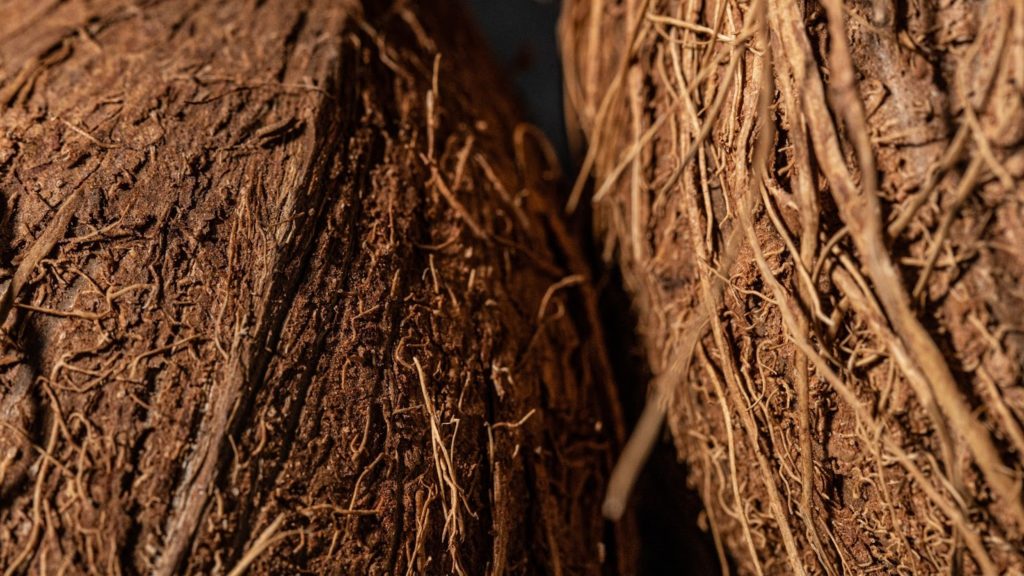Where Do Coirs Come from And What Are They Used For?

Coir is a natural, fibrous material made from coconut husks and has been in use for potentially thousands of years. However, it was only recently that coir took off as a multipurpose, all-natural fibre with uses across many industries from horticulture, upholstery, construction, and even as an effective oil and fluid absorbent.
For many people, the outer husk of the coconut is thrown out in the trash or put into compost piles to be broken down for use in their garden later. However, it has a wide array of uses that make it an invaluable material.
The coconut palm tree along with coir has been grown by people for at least 4000 years, with evidence pointing at early Austronesian explorers using coir materials for boat building and construction. The first written records for the use of coir in rope making appeared in the first century AD when Greek explorers noted the lashings used by East Africans in their boats.
The primary use for coir remained as a material for rope for many centuries, spreading around the world before becoming a key industry in India and Europe in the 19th century. This is where coir carpets and fabrics started to be manufactured.
What Are the Main Uses for Coir?
Since being used as the main material in rope making, shipbuilding, and construction around the world, today coir has expanded into a wide range of industries.
Textiles
Just as in the 19th century, coir is still used to make a wide range of textiles and fabrics including doormats, rugs, and floor coverings. And because of the porous nature of coir textiles, coir floor coverings are great for use in oily or wet environments as they do not become sodden and provide great grip to prevent falls and injuries.
Upholstery
Manufacturers use coir in different ways for upholstery, such as raw and natural coir as a string and as stuffing for mattresses or combined with rubber to make car seats, sofas, and many other pieces of furniture.
Horticulture and gardening
While coir is generally inert (after being cleaned of any accumulated sodium or potassium) and doesn’t add nutrients to gardens, it is great at soil conditioner as it prevents soil compaction and allows air, nutrients, and moisture to move through the soil. It can also be woven to create eco-friendly and sustainable pots for planting in, and large woven mats are effective at controlling soil erosion without adding inorganic material to the environment.
Construction
While traditional coir cords are still used as a construction material around the world, coir is also frequently used for insulation. It is also an extremely effective addition to plywood when glued together with wooden veneers or rubber in countries where coir is a much cheaper solution than traditional plywood.
As an oil and fluid spill absorbent
Coir is gaining popularity as a key component in oil, fuel, and fluid spill products. Because dried coir has great absorbency rates, is sustainable, easily sourced, and is non-reactive, it has many applications for cleaning up oil, fuel, and other liquid spills both at home and in industrial complexes. It is also a cheaper option than products that utilise mined clay as the main ingredient as coir is readily accessible as a by-product of coconuts.
Tests have indicated that coir, in powder form and when altered to be hydrophobic (so that it floats on water rather than mixing with it instantly), can effectively clean up oil spills in bodies of water.
This is already having far-reaching implications for natural disasters that ruin aquatic ecosystems. Once deployed to clean up oil spills in bodies of water, the coir powder can simply be collected and squeezed to remove a large quantity of oil, allowing it to be reused multiple times.
The Different Types of Coir
Coir fibre essentially comes in two different forms: brown fibre, and white fibre. The difference between the two lies in the age of the coconut when harvested.
White coir fibre
White coir fibre comes from green coconuts that have typically been on the tree for as little as 6 to 12 months. The unripe coconuts are soaked in water for as long as 10 months where they undergo a process known as retting. Retting involves microorganisms eating the organic matter around the fibres, after which they are ready to be dried, cleaned, and spun into yarn.
In order to prevent water pollution from retting, scientists have now developed a process where enzymes are introduced to the coconut husks in a controlled environment to carry out the retting process without destroying natural habitats that communities rely on.
Brown coir fibre
Brown coir fibres come from the fibrous husk of ripened coconuts. Brown coir is soaked in water to soften the fibres before the long fibres are separated from the shorter, softer ones that lie under the skin of the coconut.
The drying process can be controlled to give the brown coir fibres greater elasticity depending on their end-use. They are then packed into bundles before being sent to their end production destinations to be made into rope, insulation, textiles, and more.
Coir, the fibrous material on the outside of the coconut, has a wide range of uses and applications for many different industries. From rope making to oil and fluid spill absorbents, we can expect that many more uses will be found for this sustainable and environmentally friendly material in the future.
If you want to know more about using coir or any other material as part of your fluid spill plan, or if you have any additional questions that only the experts can answer, then reach out to us on Facebook, Twitter, or our website for the best and latest information.
